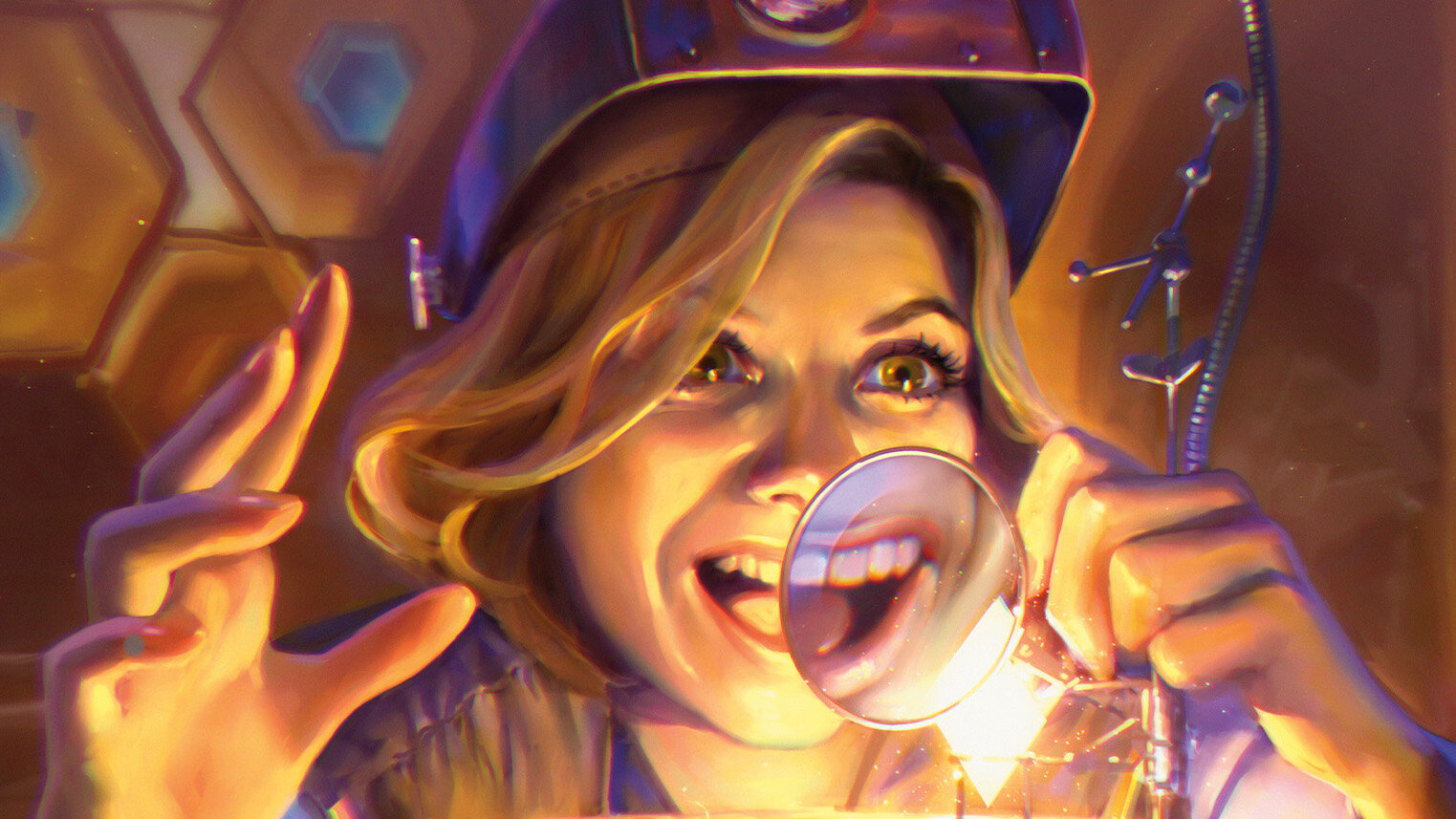The third Doctor Who precon in its series is Paradox Power, narratively set around the newest era of the show (starting with Peter Capaldi’s Twelfth Doctor). It’s mechanically set around the “ability word” Paradox. While Paradox isn’t a real, keyworded mechanic, it’s an italicized term used to encapsulate the text “Whenever you cast a spell from anywhere other than your hand.” This isn’t the first time Magic has played around with that text (it first appeared on Vega the Watcher in Kaldheim), nor is it the first commander deck to play around with the mechanic.
But it is a spectacularly well put-together take on that archetype. Let’s take a look at what in Paradox Power works, what doesn’t, and what we can do to bring it to its full potential.
Doctor Who?

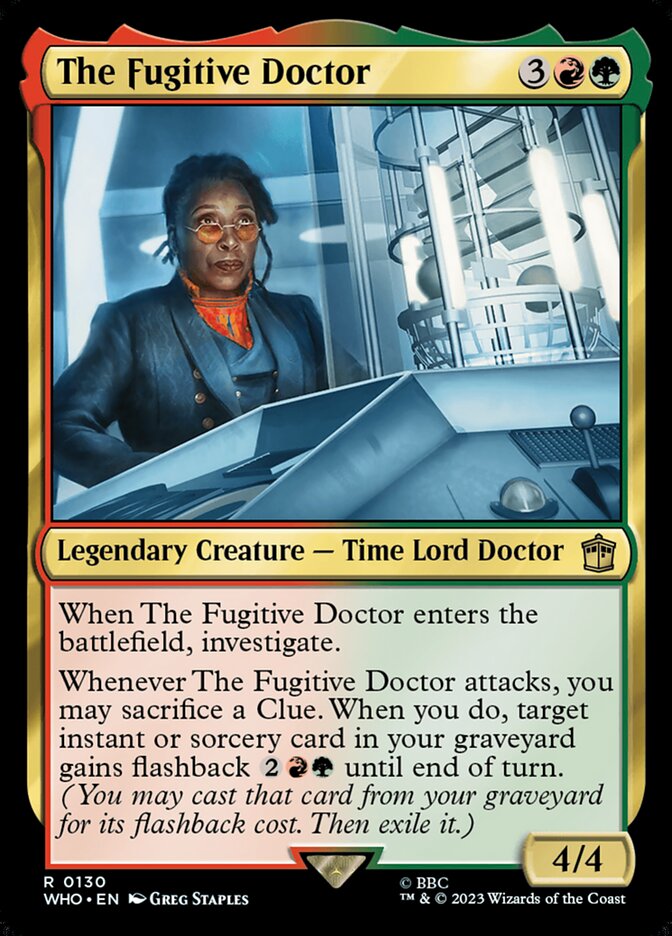
Paradox Power continues the trend of reducing the amount of Doctors available for players to choose from within the precon itself, with only three to worry about this time. They include the Twelfth Doctor, the Thirteenth Doctor and the Fugitive Doctor. The Twelfth Doctor is… interesting. His ability causes the first spell cast “paradoxically” each turn to have demonstrate. Demonstrate is a keyword that occurred on one cycle of spells back in the precons for Commander 2021. It lets players perform an odd political shuffle with their spells, offering up copies of their spells do their opponents so that they too can get an extra copy.
That ability has a lot of potential. Copying a Swords to Plowshares and then giving another one to an opponent on the condition they don’t hit your stuff can be extremely effective. In that hypothetical it lets Twelve’s controller remove a total of three creatures that weren’t theirs (even if they only got to pick two of those three). The downside comes when opponents aren’t willing to play ball, or when spells cast off Twelve aren’t so laser-targeted. Letting an opponent copy a massive advantage generator like Aminatou’s Augury isn’t a great path to success. It also doesn’t work well on legendary spells, which is a bit of a bummer.
There’s even less to say about the Fugitive Doctor. While her ability only costs a Clue, she only generates a single Clue with her enter the battlefield effect. That means to get maximum value the player needs to be generating a new Clue each and every turn. And even when the cost is paid, all she does is lets players pay an additional four mana to flash back another spell. Even if that spell costs seven or eight mana (such that paying four is a discount), players still need to find a way to get that spell into their graveyard to begin with. The Fugitive Doctor is a classic example of “too many hoops.”
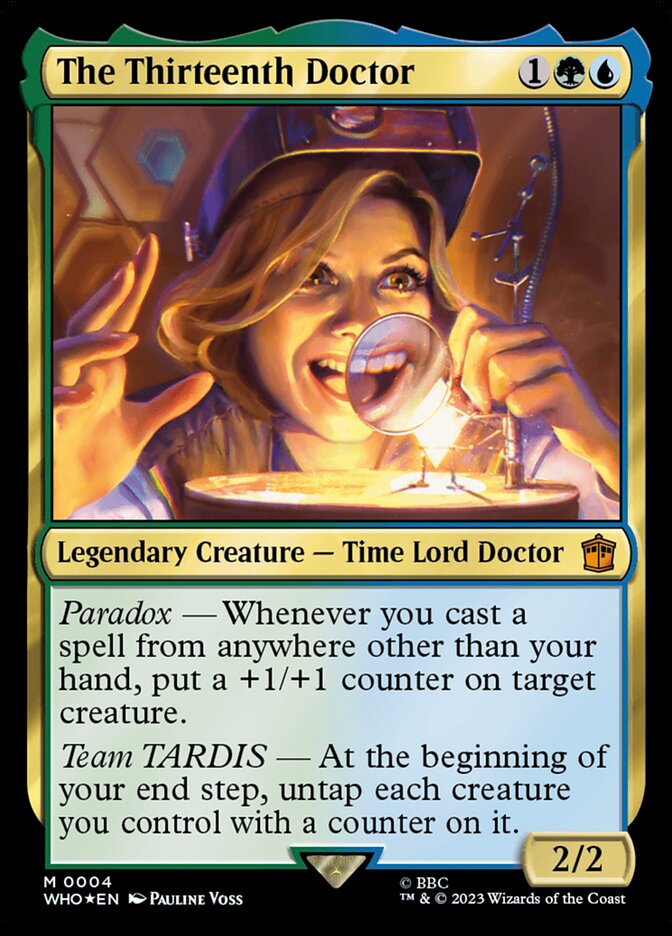
That leaves us… right back with the face commander of the precon. Thirteen has the massive upside of only being three mana to cast, and comes with a pretty interesting set of abilities. The signature “Paradox” ability acts as an enabler for “Team TARDIS,” which lets her untap an entire board full of creatures who’ve just been countered up. The floor on this is pseudo-vigilance, but the ceiling is a Wilderness Reclamation-style untapping of an entire board of creatures with tap abilities. There’s plenty of things we can do with that.
For Companions Curve is King



Since we’re leaving Thirteen as the commander for the precon, we need to pick a mono-red companion to accompany her, such that the overall color identity stays the same. There’s actually five different options here, some of which are easier to rule out than others. Bill Potts has a pretty strong ability, but doesn’t work towards the overall theme of the deck. She would make more sense in a spellslinger deck, probably using a different Doctor altogether.
Clara Oswald is a good fit for this deck, since she doubles up both of the Thirteenth Doctor’s triggered abilities. The only downside is that she’six mana, so she’s pretty hard to bring out and use reliably. Dan Lewis is only two mana, but that’s really the only thing he has going for him. There’s no particular reason we would make a lot of noncreature, non-equipment artifacts in this deck, and even if we did making them into copies of Bone Saw is… pretty underwhelming..
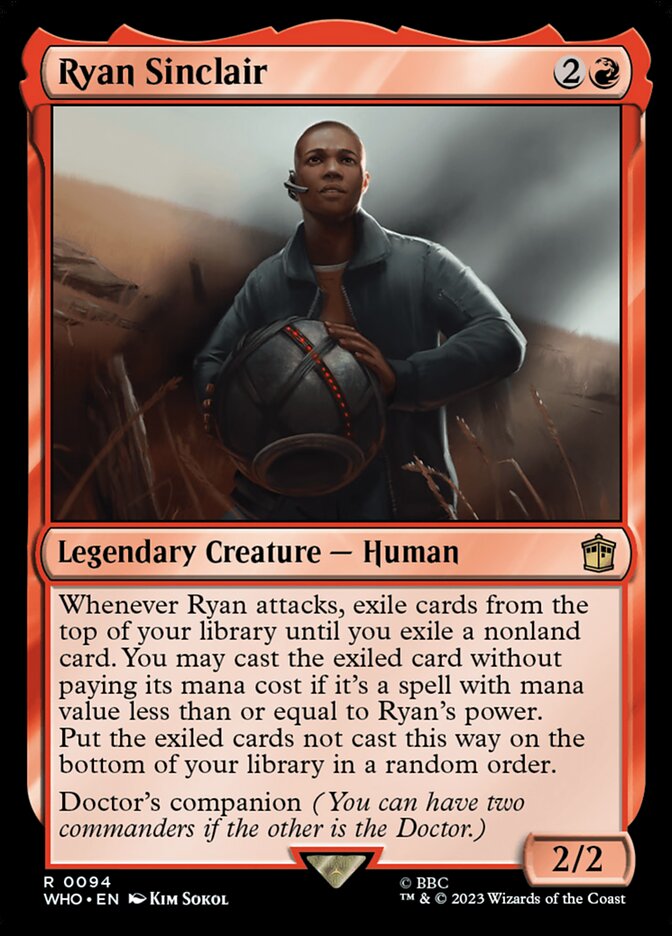
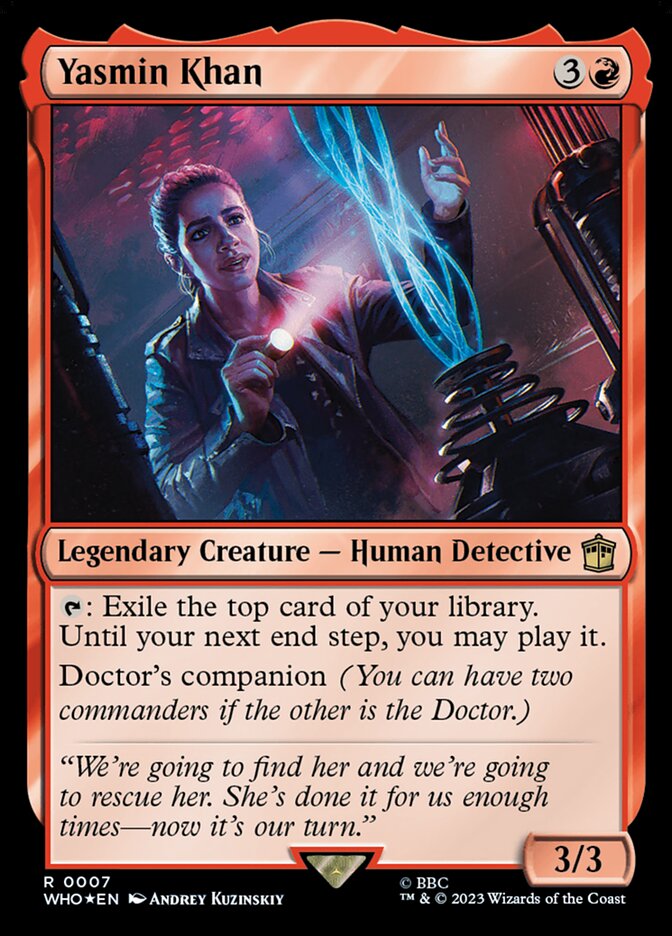
Our remaining two candidates are Ryan Sinclair and Yasmin Khan, both of whom have excellent synergy with Thirteen. Ryan can cast cards from exile to help trigger the Thirteenth Doctor’s first ability, and she can put counters on him to help ensure his ability works on bigger and bigger spells. He’s also only three mana, which is a good bit cheaper than Yasmin Khan or Clara.
But despite that, Yasmin wins out. Like Ryan she can exile cards to trigger Thirteen’s first ability, but she does so with a tap ability. This is crucially important, since it means that if Thirteen untaps her during the end step she can tap again to hit another card. It’s also okay that she comes down on turn four instead of three, since we’d probably be casting Thirteen first on turn three anyways. Ryan isn’t the “wrong” choice, but Yasmin has just that extra little bit more going for her.
Paradox to Victory

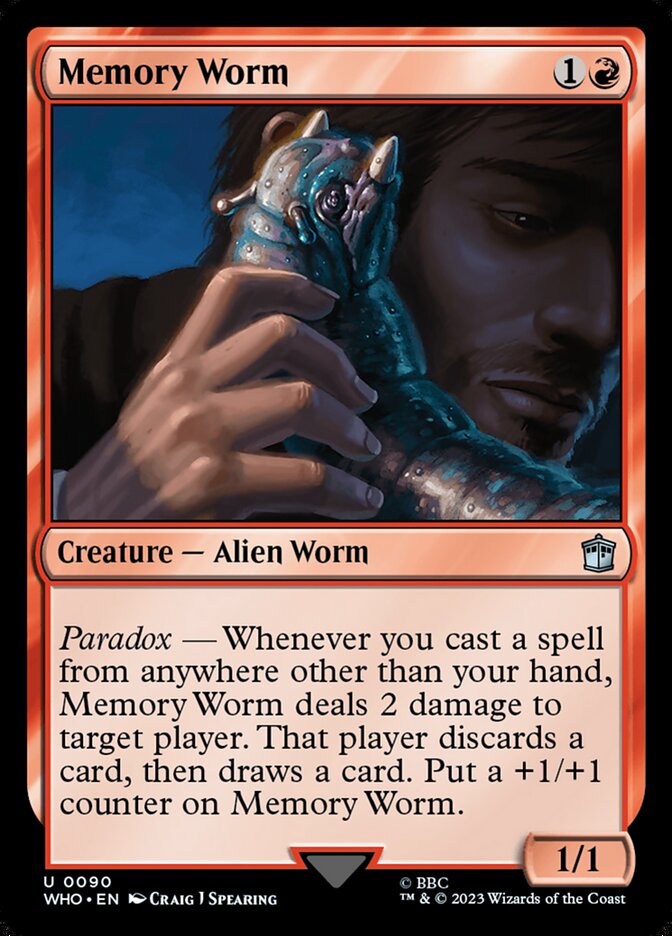
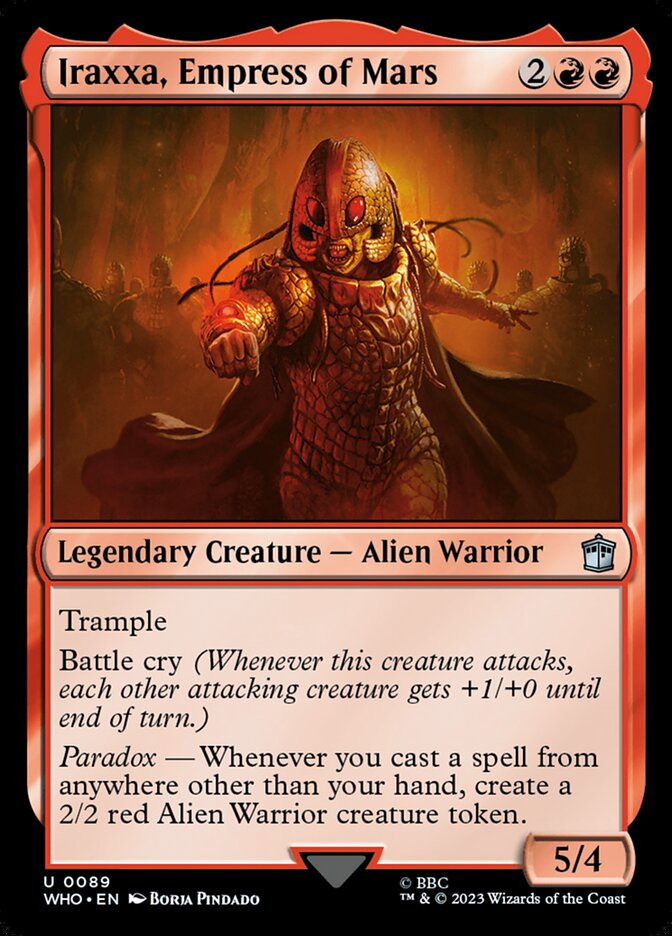
Unsurprisingly, the best cards in Paradox Power are… the ones that say Paradox. Flaming Tyrannosaurus is an absurd threat, bolting any target each and every time the player casts a spell that meets the Paradox condition. And if that wasn’t enough, it also gets larger as it does so, gaining a +1/+1 counter each time. That growth can be accelerated by targeting him with Thirteen’s triggered ability to boot. Giant threats can sometimes be made irrelevant by small blockers, which is somewhat mitigated by menace but *definitely* mitigated by the card’s death trigger. Either an opponent lets it live to keep bolting and attacking them, or they kill it and risk taking a massive stack of damage. Flaming Tyrannosaurus is by and far the best card in the deck.
A smaller, cheaper version of the Tyrannosaurus can even be found in the Memory Worm. It only hits for 2, doesn’t have evasion and lets the opponent loot every time, but it’s still a pretty mean threat for two mana. Iraxxa, Empress of Mars is another serviceable Paradox inclusion, creating an army of 2/2s and then buffing them with battle cry. She also has trample, which might not seem relevant on a 5/4, but can quickly become devastating if Iraxxa is buffed up by Thirteen’s counters. Keywords like trample or flying that scale up in power the bigger a creature is are perfect for this deck

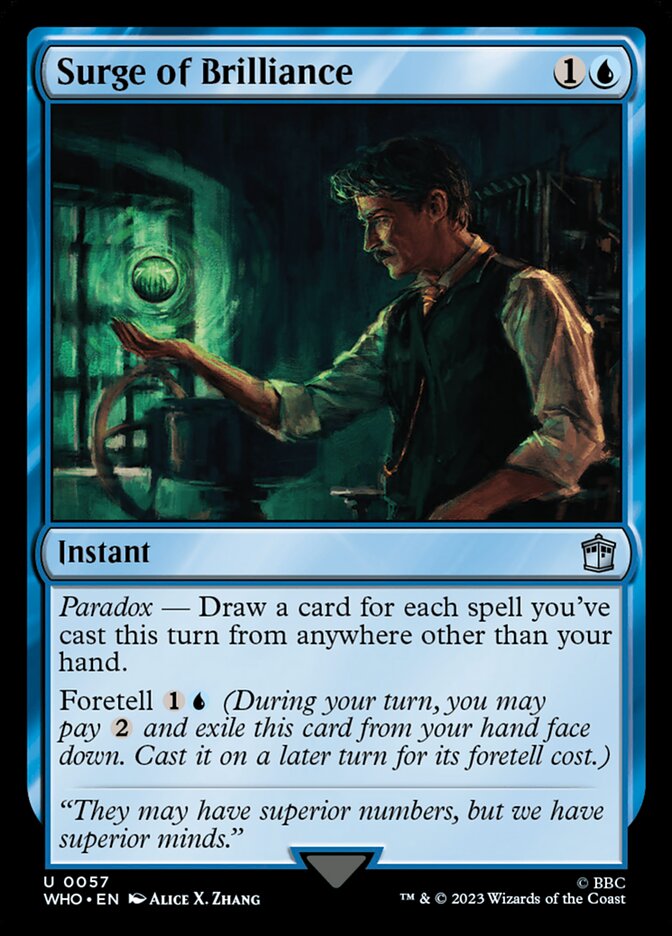
Wizards have also included the Paradox keyword on a few instants and sorceries. Impending Flux lets players asymmetrically devastate the board, dealing 1 damage to all foes for each spell cast paradoxically this turn. The spell sets the floor at 1, but if cast using the foretell mechanic it counts itself as well. 3 mana for a Shock to everything isn’t terrible, and the card can get up to absurd amounts of damage with the right setup.
There’s also a card-drawing equivalent in Surge of Brilliance, which draws a card for each spell cast paradoxically this turn. Players will want to cast this after two other spells, since even if the spell is foretold they should want to get either 2 cards for 2 mana or 3 cards for 4. Once again the ceiling is far higher, but it’s important to evaluate cards based on how they perform in the best and the worst of circumstances.
The cards included in Paradox Power make it feel like a well-tuned engine. So many cards are remarkable not for their power level alone, but for their synergies. Players might want to tinker and tweak the deck, but even out of the box it’s a force to be reckoned with.

Alex Sowa is a journalist, poet and writer. She also plays an unhealthy amount of Commander, with a dip into Pioneer from time-to-time. She’ll play any deck with either massive creatures or five-color shenanigans, but both is even better. You can find her on Twitter at @lx_sowa
